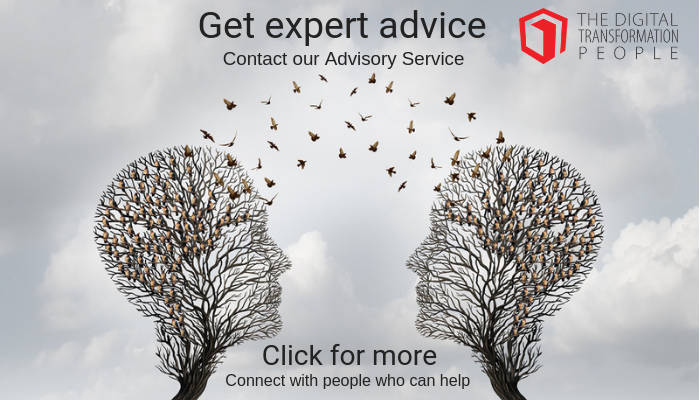March 22, 2016
Project teams need to be aware and keep-in-view the critical success factors, that impact management of enterprise-wide Digital implementation programs.
Examples:
- Projects that impact over 50+ users
- Projects that will impact several offices across locations
- Projects that will impact significant number of business processes
- Projects that will introduce a new enterprise-wide application
1. Program objectives
- Objectives need to be quantifiable
- Some objectives maybe realized with implementation go-live (e.g. process integration between Finance, Sales, Purchase) and need to be tracked and reported as part of project closure
- Some objectives maybe require time exceeding duration of implementation project. However owners should be identified within the user organization to monitor progress. (e.g. reduction in inventory carrying cost)
2. Leadership oversight
- Large digital programs have high business impact and therefore it is imperative that leadership is represented in the project governance structure
- Project Sponsor should be part of Project Steering Committee meeting
3. Program Governance Plan
- Large digital programs bring in radical transformation to an organization. It impacts people, processes and technology. A strong governance plan needs to be prepared.
- The Governance Plan should clearly highlight the scope, schedule, timelines, risk & issue management, change control, acceptance criteria, communication plan, escalation matrix and delivery model
4. Delivery model
- Project timelines, for large digital projects, are significant and it is critical for all stakeholders to have visibility of activities that would be performed project phase-wise and resources (people, technology) that would be required for each phase
- Delivery model is a part of project governance plan. This needs to clearly depict the activities that would be performed for each phase of the project viz. analysis, design, build, system & integration test, UAT, deploy, and post go-live support.
- Delivery model is critical to also depict where and when resources (people and technology) are required or be made available.
5. Core team
- User organization and implementation team should have a dedicated team representing each application module for the entire tenure of the project
- Core team from user organization should be selected from a pool of process experts who understand business processes of the organization and have a keen interest in being application champions for their respective modules post go-live
- In case some Core team members from user organization cannot be made available full-time, then the implementation partner should provide plan when these members should be available.
6. Infrastructure & licenses
- Large application installation, in digital programs, requires significant investment in infrastructure (servers, desktops, network infrastructure); and also software licenses. It is critical that infrastructure is sized to requirement and will service the organization for next 3-5 years.
- And it is important that systems are provided timely as per project plan to ensure project activities are not impacted
- Backup and/or Disaster Recovery considerations need to be understood and appropriate action taken
7. Scope
- Leading application products, implemented in Digital programs, bring best practice to the organization and enable package enabled transformation
- It is important to therefore re-engineer or re-design existing business processes to align with application best practice.
- Customization or implementing unique processes will lead to solution becoming non-scalable and high maintenance. Therefore it is critical that technical scope of work (RICEFW-P: Reports Interfaces, Conversions, Enhancements, Forms and Workflows, Portal developments are limited to minimum)
8. Documentation
- It is critical to have comprehensive documentation: AS-IS, TO-BE, Functional & Technical Design, Unit Test, SIT, UAT, Technical Architecture, Customization and End User Manual
9. Security & governance
- For business critical application, it is important that the systems and application are in secure environment.
- There is strong governance and compliance on user access to systems & processes
- There are procedures and processes defined on critical business processes e.g. how and who will create, change, archive master data; how configuration, technical objects and master data would be made available (transport) from one system to another (development to quality to production).
- Release notes need to be created before any transport/ deployment
10. User Acceptance
- User acceptance is critical to success of large application implementation.
- In case there are new User Interfaces being developed or unique business processes being design, which are not available out-of-the box in the application/product, then it is recommended to have a demo or conference room pilot or proof of concept or prototype built during the project, so that it may be reviewed by Core Team much before UAT
11. Project management & governance
- Implementation partner or onus consultant should ensure there is strong project management & governance. Schedule and cost overrun maybe significant considering initial budget require for such large engagements
12. Product support
- It is critical to understand the support provided by product partner to resolve bugs and provide upgrades.
13. Communication
- Project Communication is critical ton ensure all stakeholders are aware of their role in the RACI-S matrix (Responsibility, Accountability, Consulted, Informed, Support)
- Communication plan, a part of project governance plan, should clearly depict communication flow within and between the teams (implementation and user core team) and escalation matrix
- Periodicity of meetings, reporting frequency & format should be clearly defined
- Customer Satisfaction Survey should be conducted periodically during project tenure
14. Risk & Issue management
- To ensure project is delivered to schedule and budget it is important to have a strong risk and issue management process
- Any high risk that may impact project activities on he critical path requires leadership oversight.
- Risks that may put project on hold or lead temporary suspension (e.g. external factors like political environment that may impact movement of people and equipment) requires close monitoring. Impact of such risks would be significant considering initial project budget.
- Ownership of risks and issues need to be clearly understood by all stakeholders
15. Quality management
- Large digital projects take significant time to complete. Delay in identifying defects or gaps in solution in the project lifecycle will have cascading impact on schedule and cost
- Quality is all encompassing in large projects. It includes solution & documentation delivered by implementation partner and quality of resources staffed on the project
- Quality is also applicable to input provided by User Core team. It is critical that timely, comprehensive and accurate information is provided to implementation team.
- Non-availability of user Core Team during UAT may create a detection risk of solution defects being deployed to production. Quality of testing is equally important for user core team and implementation team
- Quality is a manual baseline which be mutually agreed between the teams. QA process, measures and metrics maybe agreed and be binding to ensure quality delivery
Browse
Article by channel:
Search
Everything you need to know about Digital Transformation
Subscribe
The best articles, news and events direct to your inbox
Read more articles tagged: Featured, Frameworks
Popular Now
The Case For Digital Transformation
The Digital Transformation Pyramid: A Business-driven Approach for Corporate Initiatives
The Case For Digital Transformation
An Executive Summary: Leading Digital by George Westerman, Didier Bonnet & Andrew McAfee
Strategy & Innovation
Target Operating Models & Roadmaps for Change
Delivery
Data Asset Management (DAM)
Strategy & Innovation
The Innovation Management Theory Evolution Map







